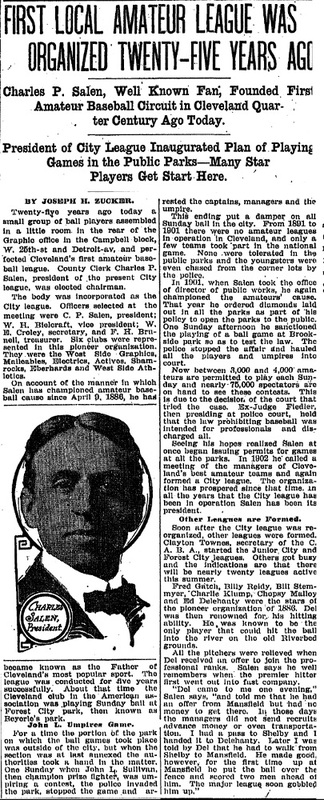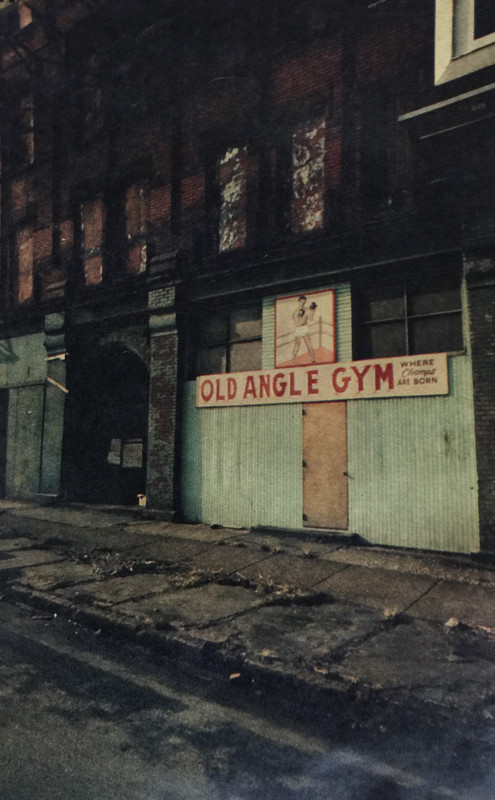
On September 19, 1975, the late George Condon, legendary Plain Dealer columnist and author of many books about Cleveland's history, wrote that the Campbell Block--condemned and slated for imminent demolition, was unworthy of historical recognition and should not be saved. "If there is anything historic about the Campbell Block it would have to be the historic drinking and arguing that took place in Green's Cafe at the street level, or in the furious thumping and rope-skipping that occurred in the Old Angle Gymnasium, on the High Level Bridge side of the building," he wrote. With all due respect to George Condon, the Campbell Block had a richer history than his column suggested.
The Campbell Block was for many years one of the most recognizable buildings in the Old Angle neighborhood on Cleveland's near west side. It was actually at one time two separate buildings located just east of Pearl (West 25th) Street, between Vermont and Viaduct Avenues. Both were built by Alexander Campbell and both came about as a result of the construction of the Superior Viaduct, Cleveland's first high level bridge, which opened to traffic in 1878. In the course of planning construction of the west side approach to the Viaduct, the City had purchased an eighty foot wide swath of land (part of the Alonzo Carter Allotment) located just east of the intersection of Pearl Street and Vermont Avenue. This purchase split a number of parcels of land and, among other things, created a triangular piece of land with frontage on Pearl Street, Vermont Avenue and the new Viaduct Avenue. During the period 1877-1882, Campbell, a Scottish immigrant who had settled in Cleveland in 1867 and had become a prominent paving contractor in the city, purchased all of the land interests which comprised the triangular area with the intent of constructing a commercial building and hotel on the land.
Campbell's first building, identified on early maps as "Campbell's Block" and located on the eastern part of the triangular piece of land, was a three-story wood and brick building which fronted on Viaduct Avenue. It was completed in 1880. The upper two floors were devoted to apartment suites, while the first floor was divided into seven store fronts for retail merchants, among whom over the years were butchers, confectioners, cigar-makers, barbers, saloon keepers and others. One of those store fronts was home to the offices of the Cleveland Graphic, a weekly Democrat newspaper. And, in 1886, according to the Plain Dealer, this was where Charles Salen, co-owner of the Graphic and County Democrat party leader, organized Cleveland's first amateur baseball league, which played its games on the southeast side at Beyerle's Park (later called Forest City Park) for several years, before moving to Brookside Park on the west side.
The second Campbell Block building—which many Clevelanders still remember—was built in 1892, just to the west of the first building. It was a red brick five-story building that was originally planned as a hotel, but became instead an apartment building with retail store fronts on the first floor. This building had frontage on both Viaduct Avenue and Pearl Street. In 1897, the building received acclaim for its innovative fire escape system—called the "Burden" fire escape, which enabled fire fighters to extract people from a burning building using a wire basket hauled along rails attached to projections from the roof and exterior sides. This new fire escape had been promoted and installed on the building by Isaac Kidd, Alexander Campbell's son-in-law and the father of the future-famed World War II war hero, Admiral Isaac Campbell Kidd. Like the first building, this building also had a variety of retail tenants on the first floor. In the post World War II era, the most famous of these in the neighborhood were J & L Seafoods, Green's Cafe, and the Old Angle Gym.
By the time World War II arrived, Alexander Campbell's heirs now owned and managed the two Campbell Block buildings. In 1948, the first building--said by one County official to be in "very poor shape," was torn down and in the same year the second was conveyed out of the family. Gradually, as the surviving building aged and deteriorated, it emptied of its apartment residents and became--from a revenue perspective, primarily a site for billboard signs. It's three locally famous first floor tenants—J & L Seafoods, Green's Cafe, and the Old Angle Gym, however, continued to operate their businesses there until the very the end. That end came in late December 1975 when a wrecking ball knocked down the building, demolishing the Block that the Superior Viaduct and Alexander Campbell had created almost 100 years earlier.
Images










